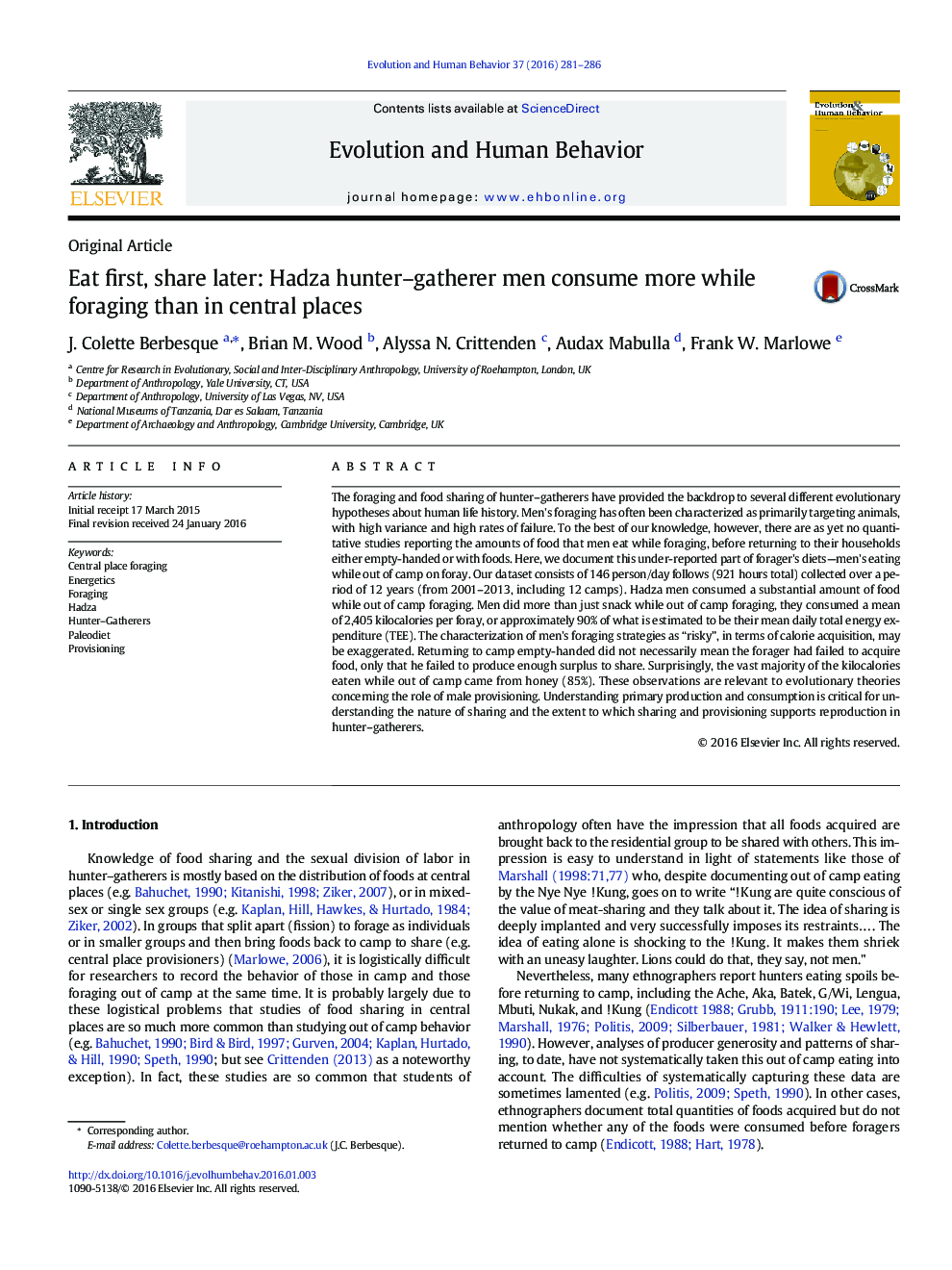| Article ID | Journal | Published Year | Pages | File Type |
|---|---|---|---|---|
| 943121 | Evolution and Human Behavior | 2016 | 6 Pages |
The foraging and food sharing of hunter–gatherers have provided the backdrop to several different evolutionary hypotheses about human life history. Men's foraging has often been characterized as primarily targeting animals, with high variance and high rates of failure. To the best of our knowledge, however, there are as yet no quantitative studies reporting the amounts of food that men eat while foraging, before returning to their households either empty-handed or with foods. Here, we document this under-reported part of forager's diets—men's eating while out of camp on foray. Our dataset consists of 146 person/day follows (921 hours total) collected over a period of 12 years (from 2001–2013, including 12 camps). Hadza men consumed a substantial amount of food while out of camp foraging. Men did more than just snack while out of camp foraging, they consumed a mean of 2,405 kilocalories per foray, or approximately 90% of what is estimated to be their mean daily total energy expenditure (TEE). The characterization of men's foraging strategies as “risky”, in terms of calorie acquisition, may be exaggerated. Returning to camp empty-handed did not necessarily mean the forager had failed to acquire food, only that he failed to produce enough surplus to share. Surprisingly, the vast majority of the kilocalories eaten while out of camp came from honey (85%). These observations are relevant to evolutionary theories concerning the role of male provisioning. Understanding primary production and consumption is critical for understanding the nature of sharing and the extent to which sharing and provisioning supports reproduction in hunter–gatherers.
